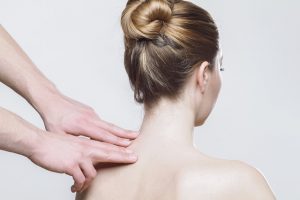Medicinal History of Acupuncture
A key component of traditional Chinese medicine, acupuncture dates back nearly 5,000 years to around 2700 B.C. The Yellow Emperor’s Classic of Internal Medicine, a treatise on traditional Chinese medicine believed to have been written in the 2nd or 3rd century BC, contains the first written reference to acupuncture. The yellow emperor of the title was actually a composite of numerous Chinese physicians whose medical knowledge was passed down and finally collected in book form.
Acupuncture began to attract widespread attention in the western world after President Richard Nixon’s visit to China in 1972. During that trip, New fork Times reporter James Reston underwent an emergency appendectomy and wrote an article on the acupuncture anesthesia that was used during the procedure. His article piqued the interest of American doctors, who began traveling to China to observe this procedure first hand. They discovered a medical practice that was used not only as a substitute for surgical anesthesia but also as a treatment for pain and numerous disorders.
Recent Acupuncture Advancements
 Today, acupuncture is practiced in a variety of mainstream medical settings and is a widely accepted treatment for pain and certain addictions. According to the World Health Organization, there are about 10,000 acupuncture practitioners in the United States, of whom approximately 3,000 are medical doctors. Americans are estimated to spend $500 million and make 9 to 12 million office visits per year for acupuncture treatments.
Today, acupuncture is practiced in a variety of mainstream medical settings and is a widely accepted treatment for pain and certain addictions. According to the World Health Organization, there are about 10,000 acupuncture practitioners in the United States, of whom approximately 3,000 are medical doctors. Americans are estimated to spend $500 million and make 9 to 12 million office visits per year for acupuncture treatments.
In November 1997, a National Institutes of Health (NIH) consensus panel reported clear evidence that needle acupuncture is effective in treating post operative dental pain as well as nausea and vomiting due to surgery, chemotherapy, and pregnancy. The 12-member panel also listed a number of conditions for which acupuncture might be used as an adjunctive therapy or an acceptable alternative therapy. These included (but were not limited to) addiction, stroke rehabilitation, low back pain, menstrual cramps, headache, tennis elbow, fibromyalgia, carpal tunnel syndrome, and asthma.
To promote greater public access to acupuncture, the panel also urged insurance companies and governmental insurance programs, including Medicare and medical, to reimburse for appropriate acupuncture treatments.
In another sign of acupuncture’s growing acceptance the U.S Food and Drug Administrations FDA) recently removed acupuncture needles from its list of experimental medical device and now regulates them just as it does scapels, ringes, and other common medical instruments.
Acupuncture is based on the same principle that underlies traditional Chinese medicine: the existence of a vital life force – qi – that circulates in the body through channels known as meridians. The 12 major meridians are believed to be connected to specific organ systems.
(There is also a network of collateral and minor meridians.) The meridians, used in both diagnosis and treatment, act as a road map that allows the practitioner to locate specific acupuncture points (acupoints).